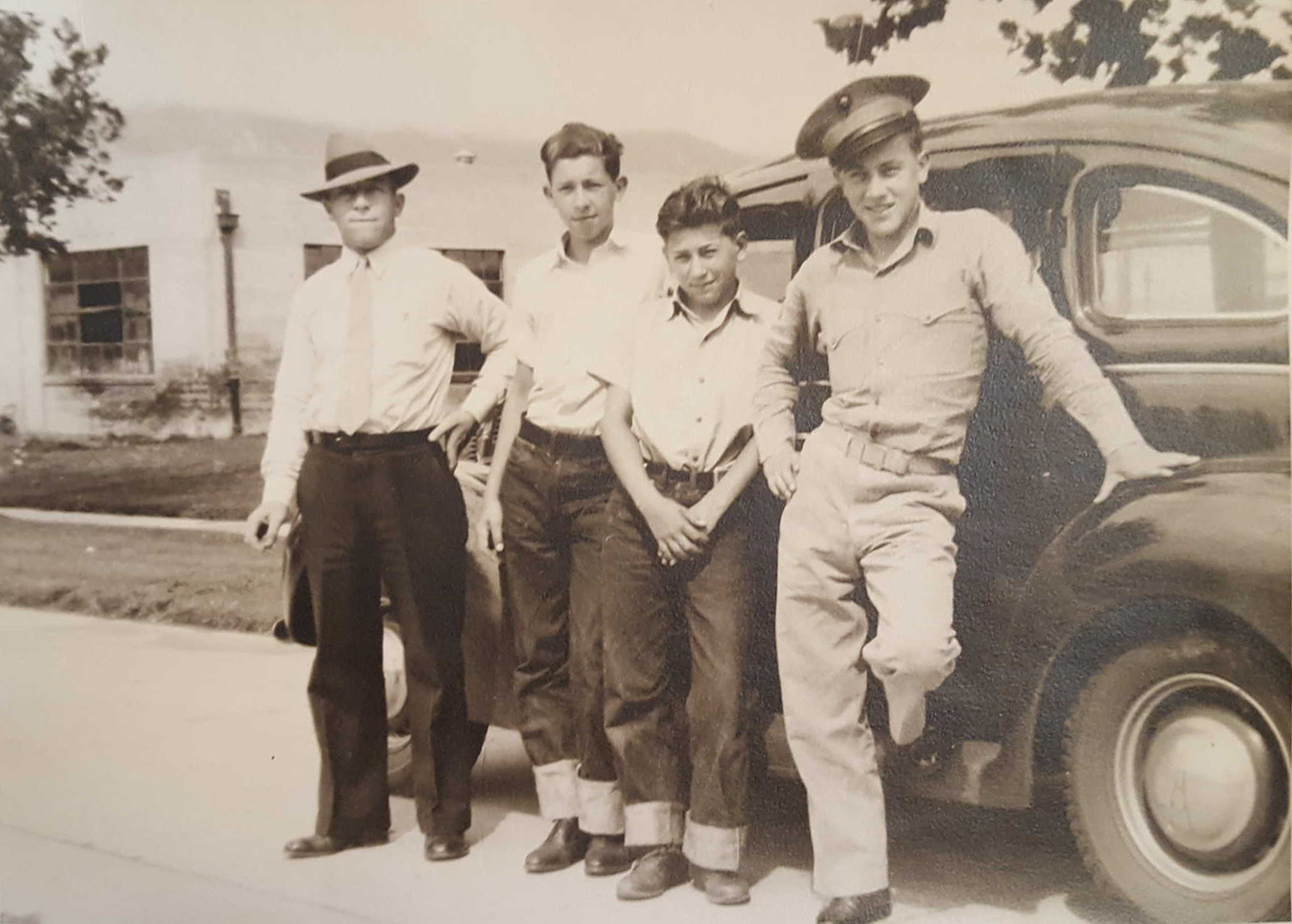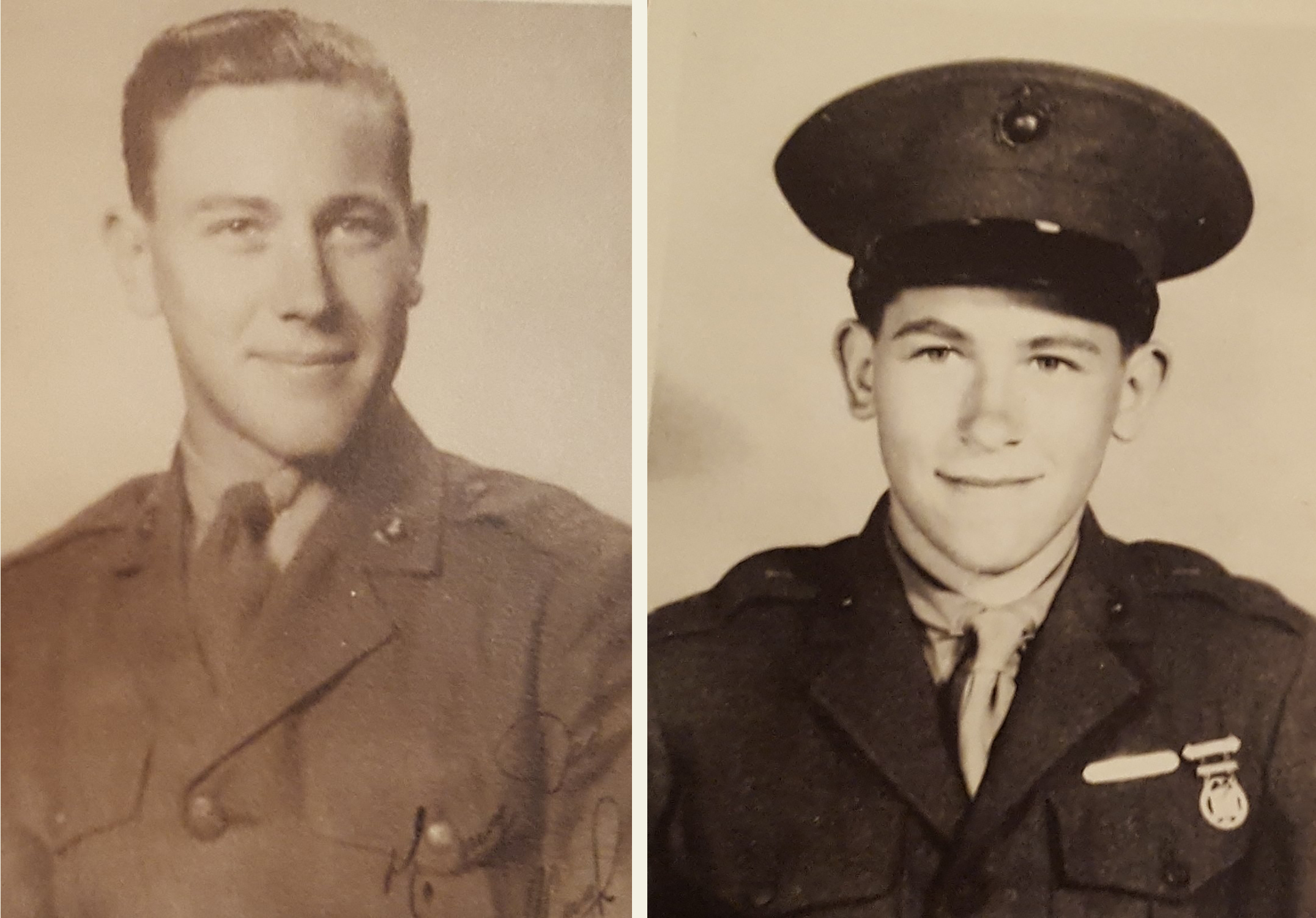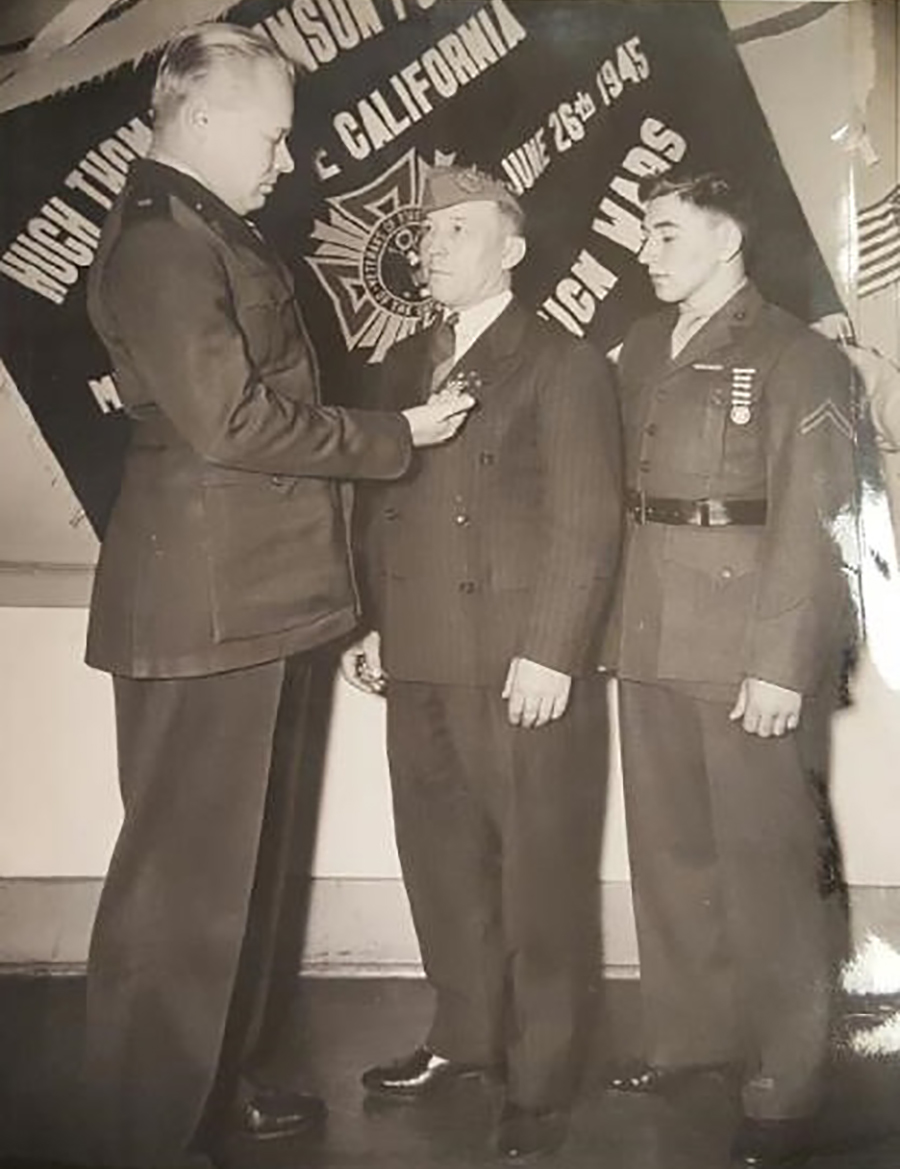Today, the DPAA announced that PFC Thomas Frank Johnson of San Jose, CA, has been accounted for as of 6 May 2020. Read their press release here.
Thomas was a California boy, born in Hollister on 30 December 1924 and raised in Santa Clara County along with his siblings Marjorie, Hugh, and Kenneth. Their youth was not without tragedy; Muriel Johnson, their mother, died in 1933 at the young age of thirty-two. The father of the family, Thomas W. Johnson, remarried a few years later.
The elder Thomas was a Great War veteran; he’d served with an observation balloon unit and kept his old campaign ribbons for special occasions. He may have had some influence on Hugh Johnson’s decision to enlist in the peacetime Marine Corps on 1 March 1940. The younger Johnson boys must have watched their brother with a mixture of pride and envy – although Hugh surely found his first duty, guarding an ammunition depot in Hawthorne, Nevada, rather tame. When Pearl Harbor was attacked, however, Hugh was on duty with Company A, 8th Marines – a rifle company – and for a few confusing weeks in December 1941, it was hard to tell if his unit would be sent overseas at once or perhaps have to defend the California coastline from a Japanese invasion. Fortunately, neither was the case. Hugh did go overseas later in 1942 when his regiment was assigned to the defense of Samoa.

 Thomas, meanwhile, was ready to enlist as well. He turned seventeen at the end of 1941, and was technically of age to serve – provided he could get parental permission. This was apparently granted once the school year ended, and on 20 July 1942, Thomas became the second Johnson brother in Marine green. He completed boot camp in San Diego, and after a brief spell with an anti-tank unit, was assigned to the regimental headquarters of the 6th Marines in October 1942. This venerable regiment had recently returned from a deployment in Iceland, and was quickly making preparations to head to the South Pacific – so quickly, in fact, that the day after Private Johnson joined the unit they boarded the SS Matsonia and sailed from San Diego.
Thomas, meanwhile, was ready to enlist as well. He turned seventeen at the end of 1941, and was technically of age to serve – provided he could get parental permission. This was apparently granted once the school year ended, and on 20 July 1942, Thomas became the second Johnson brother in Marine green. He completed boot camp in San Diego, and after a brief spell with an anti-tank unit, was assigned to the regimental headquarters of the 6th Marines in October 1942. This venerable regiment had recently returned from a deployment in Iceland, and was quickly making preparations to head to the South Pacific – so quickly, in fact, that the day after Private Johnson joined the unit they boarded the SS Matsonia and sailed from San Diego.
Around the time Hugh arrived in New Zealand, unwelcome news reached the Johnson home on Palm Haven Avenue in San Jose. Corporal Hugh Johnson was not only in active combat against the Japanese on Guadalcanal, but he had also been wounded in action. Shrapnel struck his right hand on 24 November 1942; the wound, while painful, was fortunately not very serious, and Hugh was back with his company within two days.
The Johnson brothers would briefly cross paths on Guadalcanal. By the time Thomas arrived – he was now on duty with Company B, First Battalion, 6th Marines – on 4 January 1943, Hugh’s regiment was exhausted, depleted, and malarial. The 6th and 8th Marines fought together in Army-led offensive along Guadalcanal’s northern coast for a few days before the latter was withdrawn and sent back to New Zealand. Thomas would serve on “the Canal” through mid-February; he was fortunate to escape any serious injury, and later that month he too returned to New Zealand.
Although their regiments were assigned to different camps, Hugh and Thomas would see each other in New Zealand. Their hometown newspaper would pick up on the story of two brothers, both wounded on Guadalcanal, being reunited in a field hospital to their mutual surprise. There may be a kernel of truth to the story – both Johnson boys were, occasionally, confined to sick bays with various ailments, and it is certainly possible that they met on one of those occasions – but it was far more likely that they enjoyed the occasional liberty in Wellington together. Their subsequent promotions – Hugh to sergeant and Thomas to PFC – and the increase in pay made trips to town all the more enjoyable.

The brothers would fight in the same battle one more time, but they would never see each other again. On 21 November 1943, Hugh’s battalion attempted to wade ashore to the beaches of Betio in the Tarawa atoll. The Marines had to cover nearly 800 yards of water, and were under fire the entire time. So many fell that 1/8 was all but finished as a fighting unit before it ever reached shore. Sergeant Hugh Johnson gave his life on that day, either on the approach to the beach or fighting for a scrap of land yards from the waterline.
Thomas, fortunately, never knew of his brother’s fate. His battalion came ashore to the west, on Beach Green, later that evening. After a rubber boat ride to shore and an anxious night under fire, Thomas’ company moved out in the assault on the morning of 22 November. The weather was unbearably hot, and as the day went on the Japanese recovered from the surprise of having a fresh Marine unit appear on their flank. Thomas’ company commander was shot in the neck and paralyzed, and several of his buddies also likely fell during the day’s advance.
 When night fell, Company B was told belatedly to dig in and prepare for a Japanese counterattack. They would weather three altogether, although Thomas himself likely experienced only one or two. Early in the night, Japanese troops found a gap between Companies A and B, and about fifty of them got through to fight close quarters with the Marines. During the action, Johnson’s squad began to run low on ammunition. The nearest supply point was just forty yards away, but getting there through the storm of rifle and machine gun fire seemed impossible.
When night fell, Company B was told belatedly to dig in and prepare for a Japanese counterattack. They would weather three altogether, although Thomas himself likely experienced only one or two. Early in the night, Japanese troops found a gap between Companies A and B, and about fifty of them got through to fight close quarters with the Marines. During the action, Johnson’s squad began to run low on ammunition. The nearest supply point was just forty yards away, but getting there through the storm of rifle and machine gun fire seemed impossible.
Thomas Johnson volunteered to try. He left his foxhole and scurried back to the rear, where he gathered as much ammunition as he could find. As he tried to run back, however, shrapnel from a shell or grenade hit him in the chest. With his last few breaths, he managed to get the ammo to his buddies before dying on the sand. He was just a month shy of nineteen years old.
News of the brothers’ joint demise reached San Jose around Christmastime. Kenneth, the last surviving Johnson brother, also enlisted in the Marines, but following the deaths of Hugh and Thomas, he was not allowed to serve overseas. The local VFW post was renamed “Hugh Thomas Johnson,” and the elder Thomas would receive his son’s posthumous Silver Star in a ceremony there.
The President of the United States of America takes pride in presenting the Silver Star (Posthumously) to Private First Class Thomas F. Johnson (MCSN: 418629), United States Marine Corps Reserve, for conspicuous gallantry and intrepidity while serving with Company B, First Battalion, Sixth Marines, SECOND Marine Division, during action against enemy Japanese forces at Tarawa, Gilbert Islands, on 22 November 1943. With his squad’s ammunition exhausted during a bitter engagement with a fanatic enemy, Private First Class Johnson voluntarily crawled through a concentrated barrage of machine-gun and rifle fire for a distance of forty yards in an effort to replenish the supply and, despite mortal wounds received during the perilous advance, succeeded in returning to his unit with the vital ammunition. By his daring initiative, dauntless perseverance and cool courage in the face of grave danger, Private First Class Johnson contributed materially to the success of the engagement, and his unwavering devotion to duty throughout was in keeping with the highest traditions of the United States Naval Service. He gallantly gave his life for his country.

The years after the war brought the additionally unwelcome news that neither Thomas nor Hugh’s bodies could be recovered. Both were, theoretically, buried on the island in one of the many cemeteries – but the Graves Registration Service was unable to identify the Johnson brothers from the remains they recovered.
The day after he was killed, Thomas Johnson was buried in a long trench alongside some thirty other Marines. The temporary markers put up by 1/6 did not last long; construction of a Navy base ultimately destroyed the scrap wood crosses, and the location of the grave was lost. It would remain undiscovered until 2019, when a History Flight expedition uncovered “Row D” and brought the remains back to the United States for laboratory analysis.
PFC Thomas Frank Johnson was identified on 6 May 2020 and has now been officially accounted for.
Welcome home, PFC Johnson. Semper Fi.
We are actively seeking information for PFC Johnson’s profile page.
Are you a family member or former comrade of this Marine? Do you have stories or photos to share? Please contact MissingMarines and help us tell his story.

Rest easy Marines.